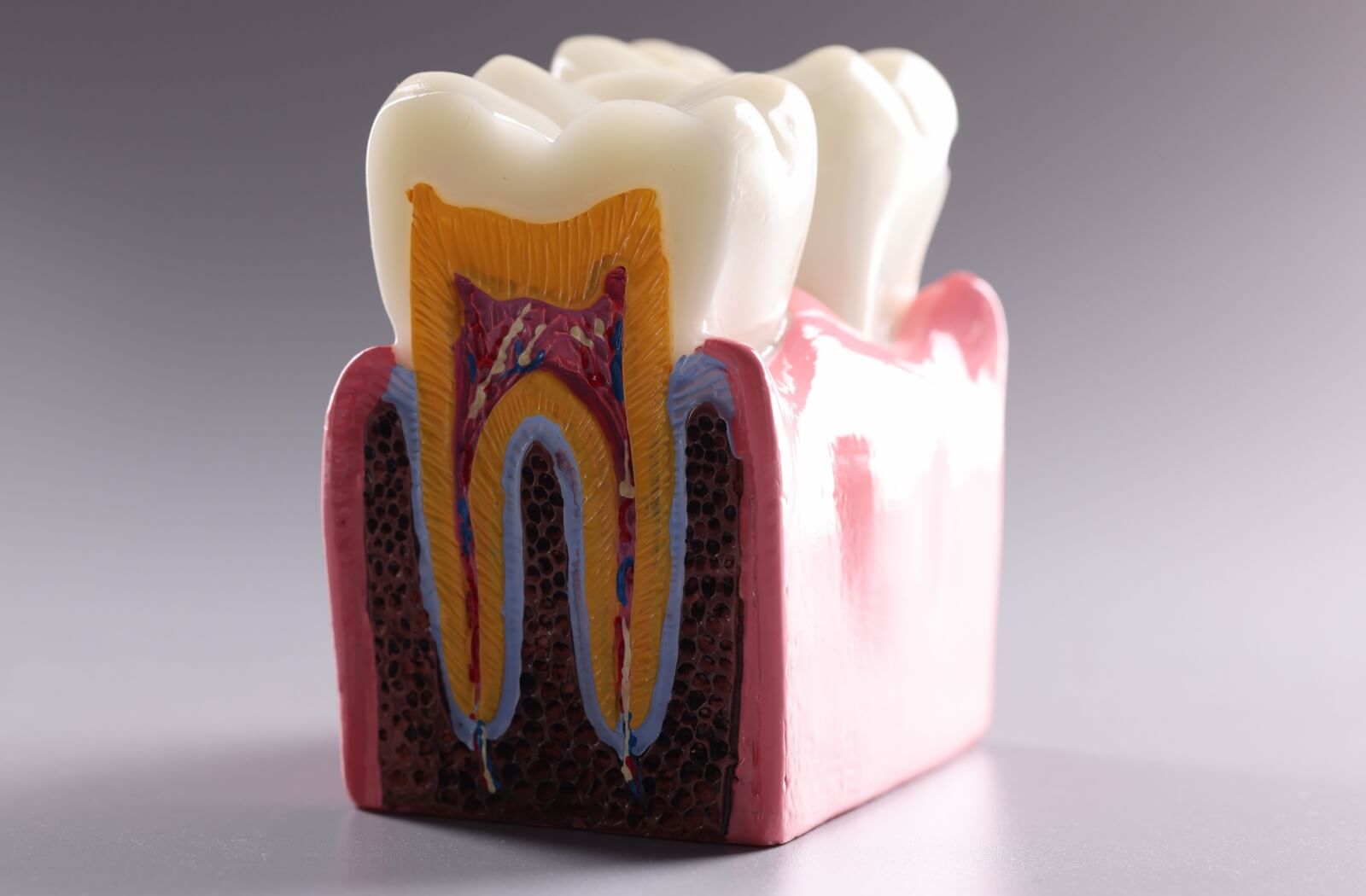How Do You Know If You Need a Root Canal?
September 17, 2024

If you're experiencing discomfort in your mouth, how can you determine whether you need a dental filling or a root canal? What signs should you look for, and when is it necessary to schedule an appointment with your dentist?
There are a number of signs that indicate you may need a root canal. These signs include, but are not limited to, persistent pain, tooth sensitivity, discoloration and swollen gums. If you have any of these symptoms, or any other persistent dental discomfort, make sure to book an appointment with your dentist.
Anatomy of a Tooth
To understand how a root canal works, it’s best to have a basic understanding of tooth anatomy.
Enamel
The outer layer of a tooth is known as the enamel. The enamel is primarily translucent, can be beige or white in color, and is composed mainly of porous calcium phosphate.
Dentin
Beneath the enamel lies the dentin, a calcified living tissue that encases the tooth’s pulp and makes up most of the tooth's structure.
Pulp
The pulp is the innermost layer of the tooth, and is filled with blood vessels and nerves.
Cementum
Cementum is a calcified tissue layer that surrounds the root of the tooth, serving to anchor the tooth to the gums.

What is a Root Canal?
The buildup of plaque on teeth can result in tooth decay, which—given time—can infiltrate its way through the hard enamel layer and down into the soft core of a tooth. This can lead to infection, necrosis, or inflammation of the pulp. In such cases, a dentist may recommend a root canal to remove the infection from the root and pulp, ultimately preserving the tooth.
The Process of a Root Canal
A root canal consists of several steps:
- Extraction: The procedure begins with the removal of bacteria, rot, and decay from the tooth’s pulp, root, and nerve.
- Disinfection: The affected area is then treated with antibiotics to eliminate any remaining infection.
- Filling: The empty root canals are filled with biocompatible material.
- Sealing: Finally, adhesive cement is used to seal the root canals, preventing future decay.
A root canal offers numerous benefits, including relief from pain, the preservation of your natural tooth, a reduced likelihood of extraction, maintenance of the surrounding bone structure, and a lower cost compared to dental implants.
Will It Hurt?
Many people’s perceptions of root canals have been shaped by sensational portrayals in media. While the procedure can seem intimidating, the good news is that advancements in technology have made the experience of root canals comparable to getting a deep cavity filled.
Local anesthesia is administered to numb the teeth and gums, and, while some soreness or tenderness may occur post-procedure, over-the-counter pain relief can aid in your recovery.
Signs You May Need a Root Canal
Early diagnosis and treatment are crucial for optimal dental health. Schedule an appointment with your dentist if you experience any of the following symptoms:
- Pain: Persistent or intermittent tooth pain can signal the need for a root canal. This discomfort may be felt deep in the tooth’s bone, in various teeth, the face, or the jaw.
- Sensitivity: Discomfort when consuming hot or cold foods may indicate damage or infection in the tooth's vessels and nerves.
- Discoloration: An infected pulp can lead to the breakdown of internal tissue, resulting in a gray or black appearance of the tooth.
- Swollen or Uneven Gums: Swelling may be constant or occasional, and often feels tender to the touch.
- A Bump on Your Gum: Known as gum boils, these bumps are a sign of infection in the tooth.
- Injury: Trauma to the mouth can compromise a tooth’s nerves, leading to inflammation and potential infection.
- Movement of the Tooth: Infected teeth might feel loose.
- Darkening Gums: An infected tooth can cause surrounding gums to decay.
- Abscess: An abscess forms a hole in the jawbone, preventing growth due to infection. Your dentist can identify abscesses during routine dental X-rays.
An Ounce of Prevention
While dental hygiene may not solve all problems, it comes close! To minimize the risk of needing a root canal, adhere to good hygiene practices that help prevent tooth decay, cavities, and other dental issues:
- Twice-Daily Tooth Brushing: Brushing your teeth every morning and night is essential for oral health.
- Flossing: Be sure to floss between each tooth at least once a day.
- Fluoride: Ensure your toothpaste and mouth rinse contain fluoride by checking the ingredient labels.
- Check-ups and Cleanings: Regular dental visits for check-ups and cleanings are crucial for maintaining oral health.
- Limit Sugary Treats: While you don’t have to abandon all treats, try to reduce sugary foods that can get trapped on your teeth. Rinsing your mouth or brushing after consuming sweets is a good habit.
These hygiene tips may not completely eliminate the chance of needing a root canal, but they significantly improve your oral health and reduce the likelihood of requiring the procedure.
Keep Smiling
If you have questions about root canals or suspect you may need one, reach out to our team at Westwood Dental. We’re here to provide the answers you need and alleviate any discomfort you may be experiencing. Our experienced dentists are dedicated to helping the community achieve brighter, healthier, and happier smiles.